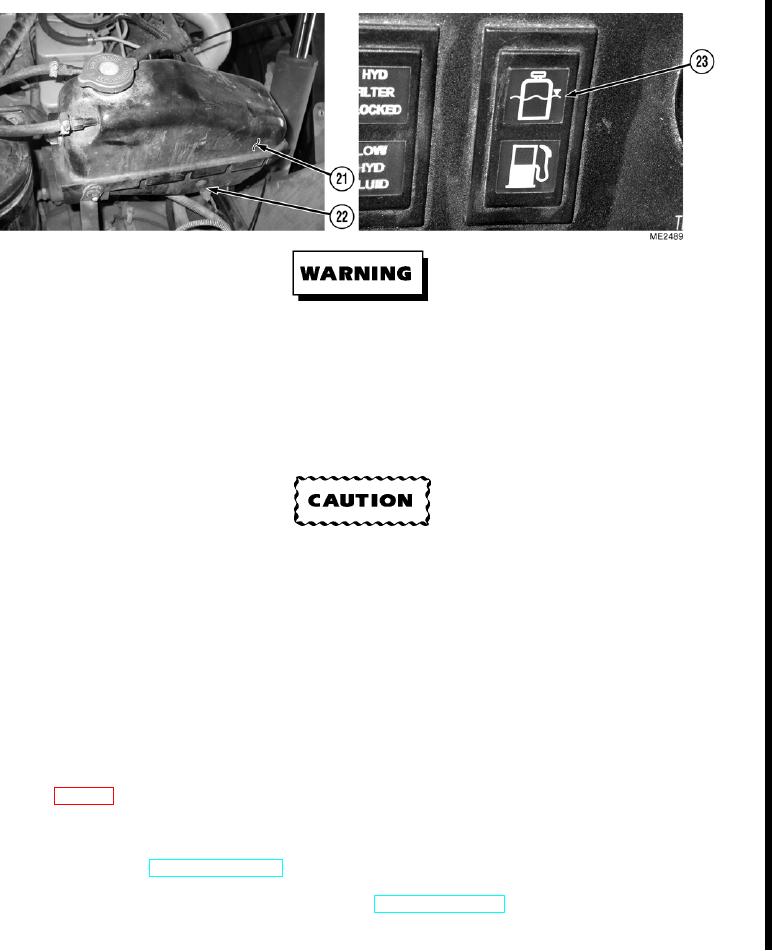
TM 5-2420-230-24-1
If vehicle has been operating, use extreme care to avoid being burned when removing radiator cap
or coolant reservoir cap. Sudden release of pressure can cause a steam flash which could seriously
injure personnel. Use heavy rags to protect hands. Slowly loosen cap to the first stop and allow
pressure to be released before removing cap completely. After use, securely tighten cap. Failure to
comply may result in injury or death to personnel.
Coolant may damage the skin. Wear protective equipment and avoid skin contact when handling
coolant.
The only coolant authorized for use in the IHMEE is Ethylene Glycol. To avoid possible internal
damage to the engine coolant system, use only Ethylene Glycol. Water may only be used in an
emergency. If water is used, the coolant system must be drained, flushed, and refilled with Ethylene
Glycol at the first opportunity. Failure to comply may result in damage to equipment.
NOTE
Ethylene Glycol is not supplied ready to use, and must be mixed prior to filling the cooling system.
Refer to TB 750-651.
(7)
Drain coolant from coolant tank (21) until it reaches level of sending unit (22). Low coolant indicator light (23)
should be lit.
(8)
After verifying proper operation of LOW WATER ALARM module, fill coolant tank (21) to proper level
e. Follow-On Maintenance.
(1)
Close PDP door (TM 5-2420-230-10).
(2)
Remove "Do Not Operate" tage from ignition switch (TM 5-2420-230-10).
END OF TASK
Change 1
12-31

